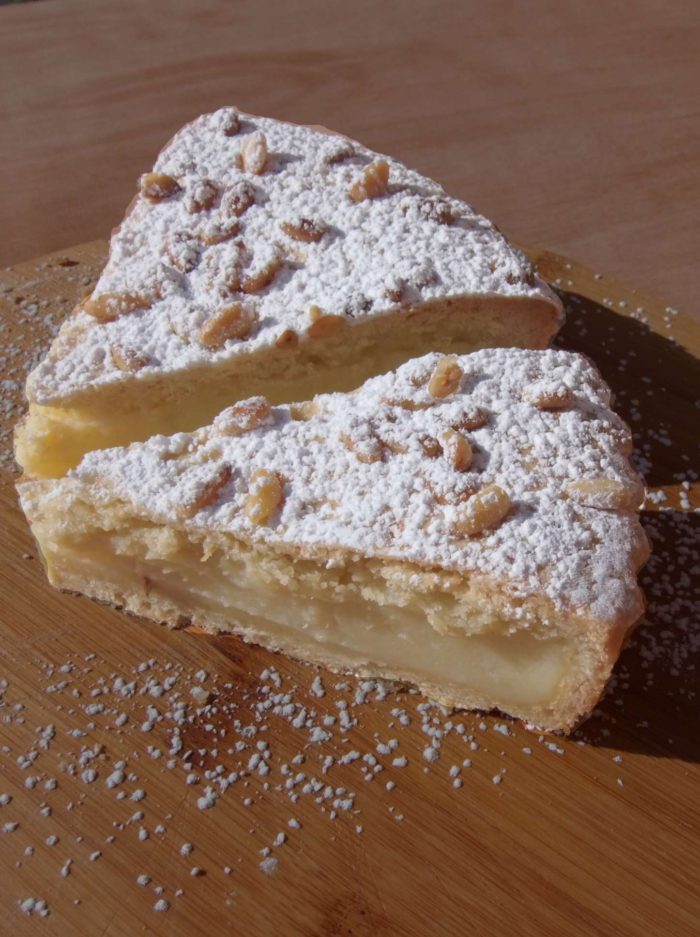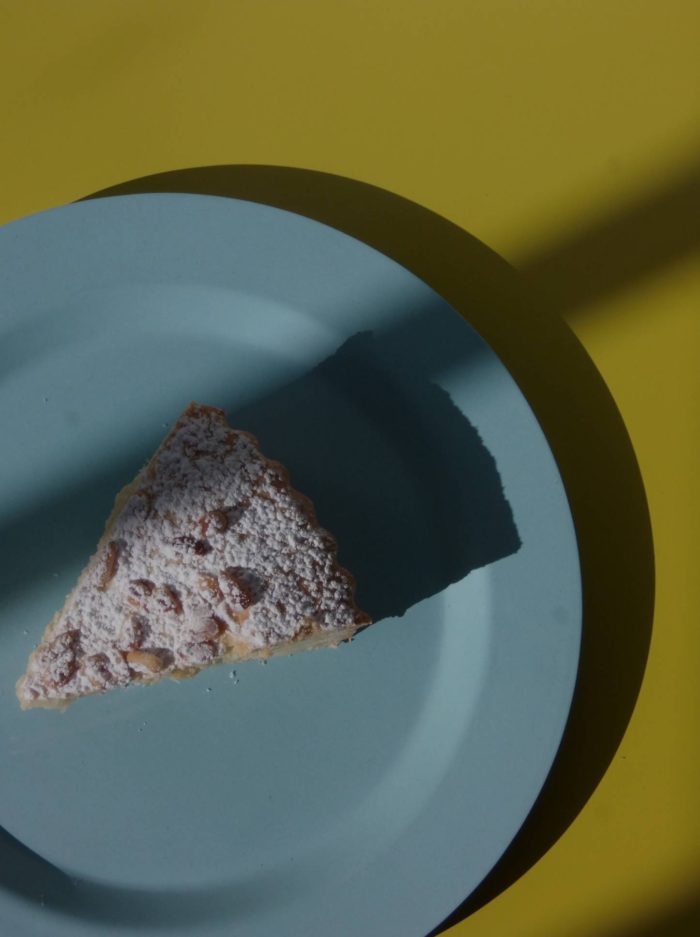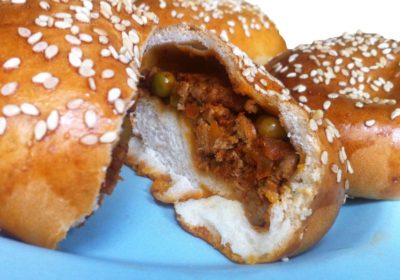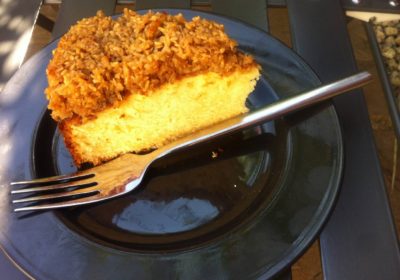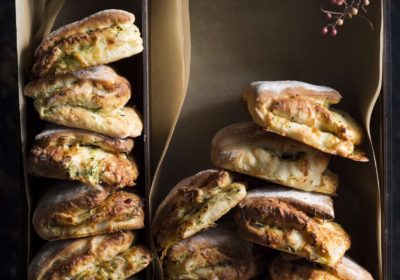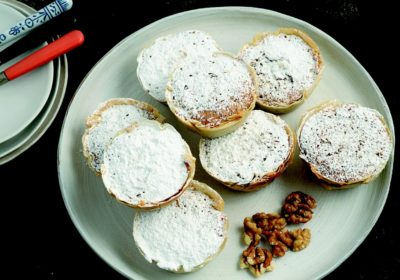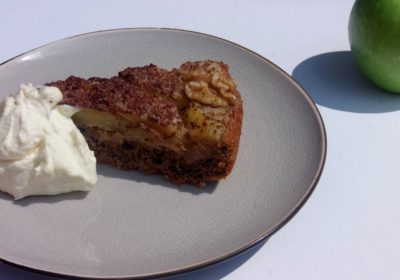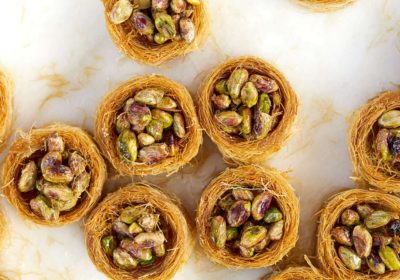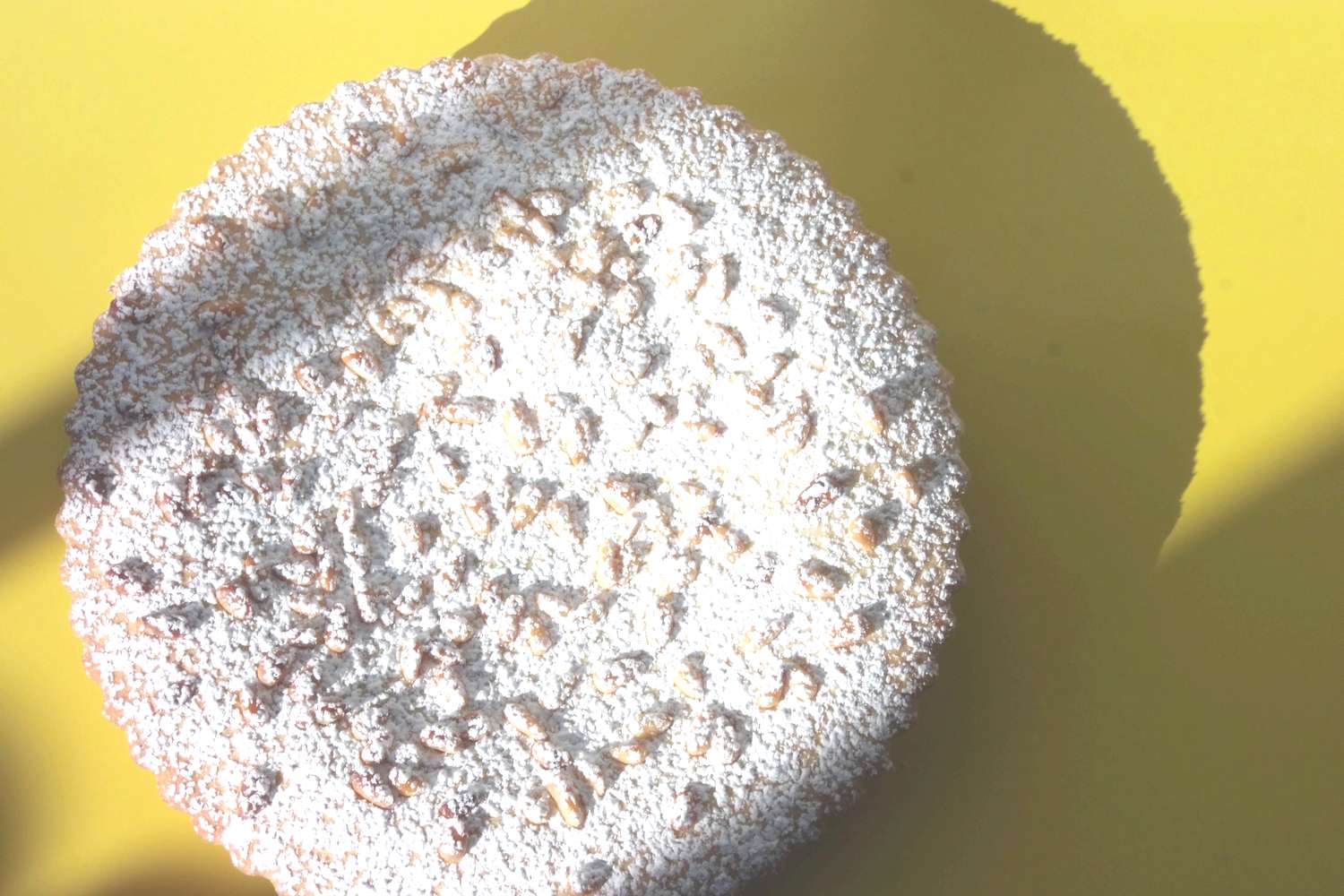
Delicately fragranced with lemon, both in its crème pâtissière filling and pastry case, the Torta della Nonna is a timeless, Italian classic for good reason. A top scattered with pine nuts and dusted with icing sugar, ‘grandmother’s tart’ is omnipresent on the menus of Italian restaurants and delis the world over. Originating in Florence, where pasticerria and cafes such as Rivoire pertain to be the best in business, this tart is one of Europe’s classics and scores highly when it comes to impressive results for a relatively easy bake.
Details
- Preparation Time: 1:00
- Cook Time: 0:40
- Cuisine: Italian
- Servings: 8
Ingredients
- For the pastry:
- 2 eggs
- 450 g plain flour
- 160g white sugar
- 200g cold butter
- The rind of one lemon
- For the lemon crème pâtissière:
- 750g of whole milk
- 3 eggs plus one yolk
- 225g white sugar
- 35g corn flour
- 30g plain flour
- The rind of one lemon
- For decoration:
- 25g pine nuts
- Icing sugar
Preparation
- 1For a tart tin of approximately 26cm
- 2Cut the cold butter, straight out of the fridge into small pieces and, using a mixer or working by hand, combine it with the flour. Rubbing the two together or pulsing in the mixer, working quickly to keep it cool, the texture should become similar to breadcrumbs. Tip the mixture out onto a clean surface and create a well in the middle.
- 3Pour the sugar and the eggs in to the well and grate in the lemon rind. Slowly bring the ingredients together, working from the wet mix and bringing in the flour and butter. As it forms a dough, knead it briefly to fully incorporate the ingredients. It can be very moist, so add more flour if it is unworkable, but it should remain just a little more flexible than normal short crust pastry dough.
- 4Shape the pastry a disc, wrap it in cling film and then leave it in the refrigerator to rest for about 30 minutes. While it’s resting, make the crème pâtissière.
- 5Pour the milk into a sauce pan and add the rind of the second lemon, ideally in wide strips using a vegetable peeler as it will need to be removed again shortly (difficult with grated rind), before warming to just before boiling point.
- 6Sift the flour and cornstarch to create an airy mix. Break the three eggs and the additional yolk into a bowl and mix in the sugar until it is absorbed. Add the flour and cornstarch and combine thoroughly.
- 7Remove the pan of milk from the heat and carefully remove the lemon rind. Take a little of the warm milk, add it to the egg mixture to loosen and soften it by briskly working it with a spoon. Return the pan to the stove and pour in the eggs mixture, whisking all the time. Continue to cook slowly, continuously whisking, until the custard thickens. Once it has gone just beyond free pouring consistency remove it from the heat and transfer to a cool dish. Cover it with Clingfilm to avoid a skin forming on the surface.
- 8Grease the tart tin with butter and dust with flour, tapping out the excess. Preheat the oven to 160° (fan assisted).
- 9Remove the dough from the fridge, place it on a floured work surface and roll it out to a width of 3mm ready. Use the rolling pin to gather the dough, rolling it up and unrolling it over the mould. Gently press the supple dough into the bottom and around the sides of the tin, roll the rolling pin over the tin and remove the remaining pastry. Roll it out to roughly the diameter of the tin for the lid.
- 10Prick the pastry base with a fork and pour in the cooled crème pâtissière and cover with the remaining pastry, pressing it at the edges and removing the excess. Make six to eight holes, no bigger than a pencil width, in the lid and then scatter with pine nuts, gently pressing them to avoid them rolling off.
- 11Bake the tart for 50 minutes in the lower part of the oven, then finish the tart for ten further minutes at 180° being careful that it retains only a golden brown colour. As it cools, sprinkle the tart with icing sugar before serving with an espresso.


